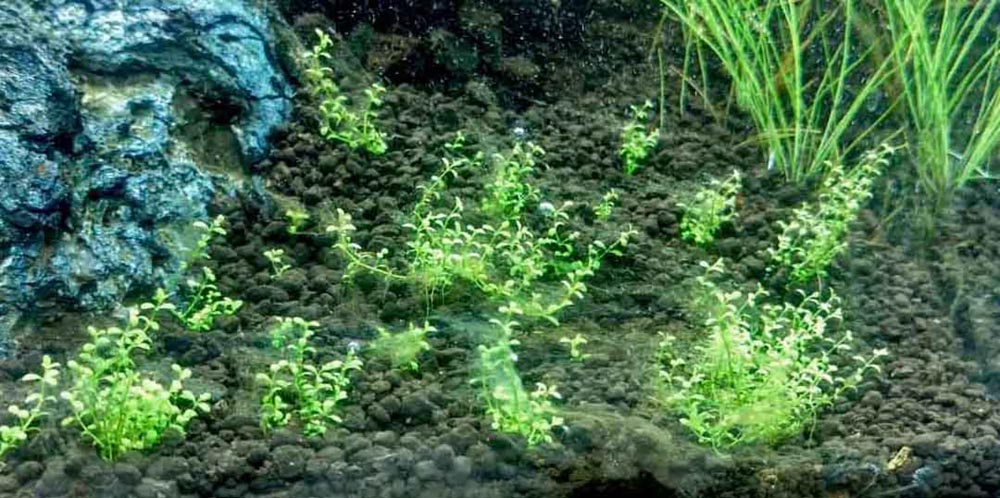Your Cart is Empty
Menu

How to control brown algae (diatoms) in planted aquariums
July 04, 2025 6 min read

Introduction
Diatoms (a member of the algae class Bacillariophyceae) appear as yellow-green or brown spots and/or as a stringy brown mass. Diatoms are found in virtually all freshwater and saltwater bodies and are one of the most ubiquitous algae in the world, accounting for a quarter of the world's biomass. Diatom photosynthesis in the oceans produces more than 25% of the world's oxygen. They can be found in small quantities on the surfaces of plant leaves and in the substrate - and can be found in virtually any aquarium, no matter how clean it looks.
Diatoms multiply rapidly in the right conditions, doubling in size in as little as 24 hours, but the lifespan of individual cells is short, usually less than a week. Diatoms build their cell walls from silica, and this has led some to conclude that it is silicates from sand or soil that cause diatoms to bloom. Most tap water contains silicates, as do substrates such as sand or aquasoil. Studies have shown (Kilham, 1971) that the levels of silicate required for diatoms to thrive in freshwater are very low, and most freshwater systems are rich in silicate - so total removal of silicates does not seem to be a practical approach to diatom control.
The approach to diatom control in aquariums lies not in the total elimination of silicates, but in allowing natural ecological succession of species to take place. Algae is at the bottom of the food chain for micro-organisms, and the majority of diatom issues in aquariums seem to clear up as the microbial community in tanks mature. Actions that speed up or help tank maturity will help clear out diatom blooms.
 Spectacular diatom bloom from a newly set up tank. Photo from Nate B..
Spectacular diatom bloom from a newly set up tank. Photo from Nate B..
Diatom blooms in new tanks can happen quickly in hours. This can easily lead to panic even for seasoned aquarists. However, the majority of such issues can be resolved without resetting the tank.
Solving diatom issues in new aquariums
In planted aquariums, diatom blooms are common in new setups during the first few weeks. The approach for new aquariums is in two parts. The first is to speed up tank maturity - as the microbial communities grow and the tank becomes biologically mature, diatoms will stop spawning without any additional action. The second thing we can do is preventing the diatom bloom from getting out of hand while the microbial community is taking its time to develop. Diatom blooms that run unchecked can choke plants in a new set up and prevent them from growing in smoothly - and stressed plants can trigger another round of algae to spawn.

Accelerating tank maturity
Seeding the tank with old filter media is the fastest way to introduce a good variety of microbes to a new tank environment. This can be done by squeezing old filter sponges directly into the new tank, and allowing the filter to run. Mulm from aged substrates can also be collected and added to the new tank's substrate.

Gunk from old filter media contains beneficial microbes that can be used to seed a new aquarium.
Most beneficial microbes propagate better in well oxygenated environments. Using a surface skimmer to keep the water surface clear, and having a good amount of flow in the tank helps oxygenate the aquarium. Having a filter that has a flow rate 6X to 10X of the aquarium's volume is helpful.

Surface skimmer intakes channel oxygen rich surface water directly into the filter. It also keeps the surface clear which improves gaseous exchange. Having a strong filter and flow pattern that reaches all areas of the tank ensures good oxygen levels throughout the aquarium.
Planting more densely at the start speeds up the ecological maturity of the tank. The exact mechanisms of why this is so is still being studied - some theorize that aquarium plants create favourable micro-climates for microbial propagation, or that they transport useful microbial colonies on their surfaces into new tank environments. What we do observe is that well planted tanks mature much quicker than tanks that start out sparsely planted. As the plants grow in, algae reduces rapidly.
A good level to aim for is to have 75% of the substrate planted. This is a high bar that could be expensive in areas where plants cost a lot. Aquarists could make use of cheaper, more widely available species as space filers to allow the tank to mature, then replace them as time goes by.
Well planted tanks that have high plant mass of healthy plants repel algae naturally. So growing plants well, and providing good growth conditions to plants directly leads to better algae control.

Diatoms stop blooming naturally when plant mass grows in. Sparsely planted tanks can take a longer time to mature.
For a more in-depth article on how to stabilize a new planted tank fast click here.
Preventing the diatom bloom from getting out of hand
A heavy diatom bloom can choke plants, blocking out light and preventing the plants from growing in smoothly. We should minimize the key triggers that accelerate diatom propagation.
Heavy nutrient dosing couple with high light exacerbates existing diatom problems. Newly planted aquariums have relatively light nutrient draw, as the plant mass is usually small and plants need time to fully adapt to the new tank environment. The full adaptation process for newly introduced plants can take a couple of weeks. During this period, plants should be fertilized so that they can grow well, but it should be done lightly. Fertilizer that is heavy in phosphates or ammonicial nitrogen should be avoided or used sparingly.

At 2hr Aquarist, we often recommend folks start with APT1 (which is free from nitrogen/phosphates), this allow new tanks to settle in smoothly. As the tank matures and plant uptake increases, we transit to using APT3 (which contains all elements including nitrogen and phosphates). This avoids accelerating algae growth in the initial stages of a new tank setup.
Aquarists often use more light in order to speed up growth and get better plant coloration. However, high light at the initial stages of a new tank has a dramatic impact on accelerating algae growth. It is much more prudent to start at lower light levels, then ramp up light levels as the tank mature to get better colouration and density. For aquariums with only green plants, 40-60umols of PAR on the substrate is a good starting point. For aquariums with more demanding plants, 80-100umols of PAR is a good starting point.

Trimming away deteriorating leaves, and siphoning away larger clumps of diatoms during water changes prevent the algae from covering up the plants.
Click here to learn how to manage plants during this adaptation phase.
Common Causes
-
Biologically immature planted tanks.
-
High light, coupled with high nutrient values in a new tank setup.
-
Sustained presence often caused by tank instabilities that resets/disrupts the biological cycle (exotic substrates, especially for DIY dirt substrate users can face this).
-
Elevated ammonia or phosphorous levels in a biologically immature tank.
Solutions
-
Speed up aquarium's biological maturity by using mulm or old filter media.
-
Higher plant mass allows plants to out complete algae.
-
Plant husbandry techniques to get plants adapted more quickly as described on this page.
-
Manually siphon off during water changes.
-
Ion-exchange resin that removes ammonia/phosphorous in desperate cases.

Silicates and diatoms?
"But many papers out there show a link between silicates and diatoms"
Concepts from the study of natural systems are not necessarily directly applicable to the operation of our aquariums. Silicates are present in most tap water and soils, and most aquariums are not lacking in them. A newly planted aquarium with low levels of silicates in the tap water may still suffer from a diatom outbreak. On the other hand, a well planted, biologically mature aquarium will not see diatoms even with elevated levels of silicates or phosphorus. It is much more practical to focus on general plant health and plant dominance in a planted aquarium.
In the 2hr gallery, our tap water comes out of the tank with 4ppm silicates. In many of our tanks we also have 1ppm phosphates in the water column. If silicates and phosphates were really the diatom triggers, we would have no end of diatom problems. However, as with most people's experience, diatoms appear in our new setups and disappear on their own as the aquariums mature.

Here are links to further reading on:
1. Understanding water parameters
2. Detailed steps on how to cycle a planted tank
3. Learn more about tank maturity
unlock your true potential
Grow anything, defeat algae, create amazing aquascapes
























